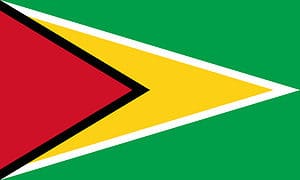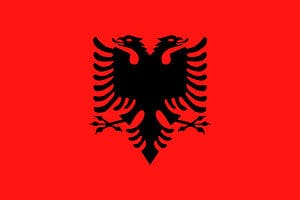Officially called the Italian Republic or the Republic of Italy, Italy is located in southern Europe, right in the middle of the Mediterranean Sea. Some parts of the country are also considered parts of western Europe, and the country shares borders with other European countries like France, Austria, Switzerland, and Vatican City. Several things make Italy a very fascinating country, such as its views and multiple tourist attractions. In addition to these, another interesting part of the country is its flag. The flag of Italy has a long history and is a symbol of unity and identification. This article will shed more light on the history, meaning, and symbolism of the flag of Italy, as well as various interesting facts about the country.
Italy: Geography and Climate
Italy, which is located in south-central Europe, has some of the world’s most diverse and beautiful landscapes. One of the country’s most distinctive features is the various mountainous peaks, some even extending into other countries with which it shares borders. Over 35% of the country’s territory is covered by mountains, with the Alps forming most of the northern boundary. The country’s highest point is Mont Blanc, which stands at an impressive height of 15,780 feet (4,810 m). Other popular mountains found in Italy include Monte Rosa, which sits on the border of Switzerland and Italy, the Dolomites in the east, and Matterhorn, which is one of the highest at over 14,000 feet. The country is also known for its volcanic presence in many of its territories, and it is also home to the largest active volcano in Europe, Mount Etna, located in Sicily.
Italy is surrounded by the Mediterranean Sea on all sides, with the exception of the north, and this vast body of water has an impact on the country’s climate. Italy is located in the temperate region of the world and has different climates across its various regions. The climates in the northern region connected to the European continent, and the southern region surrounded by the Mediterranean, differ. The northern areas that house the Alps are known to have a mountainous climate with low temperatures and higher rainfall. Most of the central and northern inland areas have climates that range from humid to subtropical to oceanic. Other parts of the country are favored by cool winters and mostly warm summers.
Italy: Culture and Cuisine
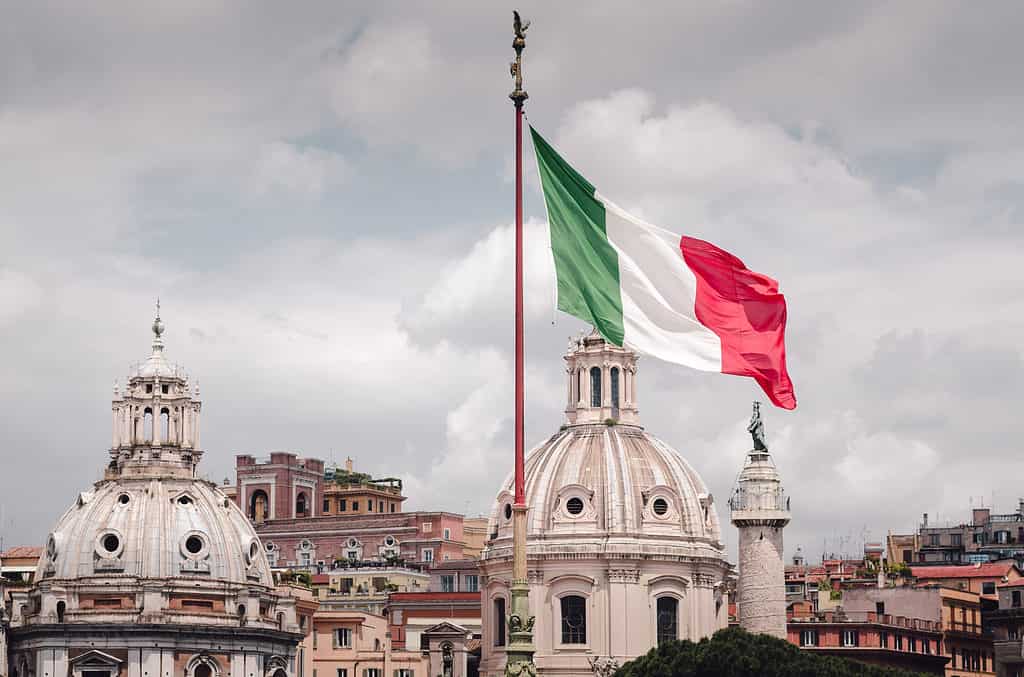
Italy is considered one of the birthplaces of western civilization and a cultural superpower.
©Philipp Dase/Shutterstock.com
The country is home to over 60 million inhabitants that cover a total land area of 301,230 square kilometers (116,306 square miles), of which 294,020 square kilometers (113,522 square miles) is land, and 7,210 square kilometers (2,784 square miles) is water. As a result, it is the country with the sixth-highest population density in Europe and the tenth-largest land area on the continent. The historical dominance of many peoples over different regions of the peninsula may help to explain why Italians cannot be characterized by a single culture.
Italy is considered one of the birthplaces of western civilization and a cultural superpower. Italy’s culture has been influenced by numerous regional traditions as a result of centuries of political and geographic division that ended with its eventual unification in 1861. Italy has played a crucial role in Western culture in many different parts of the world for centuries and continues to do so today. The country continues to be recognized for its cultural traditions and artists.
Like its people, the country’s cuisine is also diverse but is primarily characterized by pasta, cheese, wine, and sauces. Despite having certain popular dishes, the various regions in the country have different methods of making certain meals; incorporating various ingredients and spices to make them even more unique.
Italy: Language and Religion
The primary language of the country is Italian, which was accepted more as an administrative and literary language until the 19th century. Despite having a primary language, the various regions in the country still have different variations of the language. Also, considering the vast population of the country and the varying cultures of its residents, there are other languages that are spoken among the people; more in some places than others. They include French, Albanian, Spanish, Arabic, and Croatian.
Although Italy is a multi-religious country, the most practiced religion in the country is Roman Catholicism, as the Roman Catholic church played a prominent role in the development of the country. Currently, Italy has the world’s fifth-largest Catholic population and is the largest Catholic nation in Europe. Other practiced religions within the country include Judaism, Hindi, and Sikh.
History of the Flag of Italy
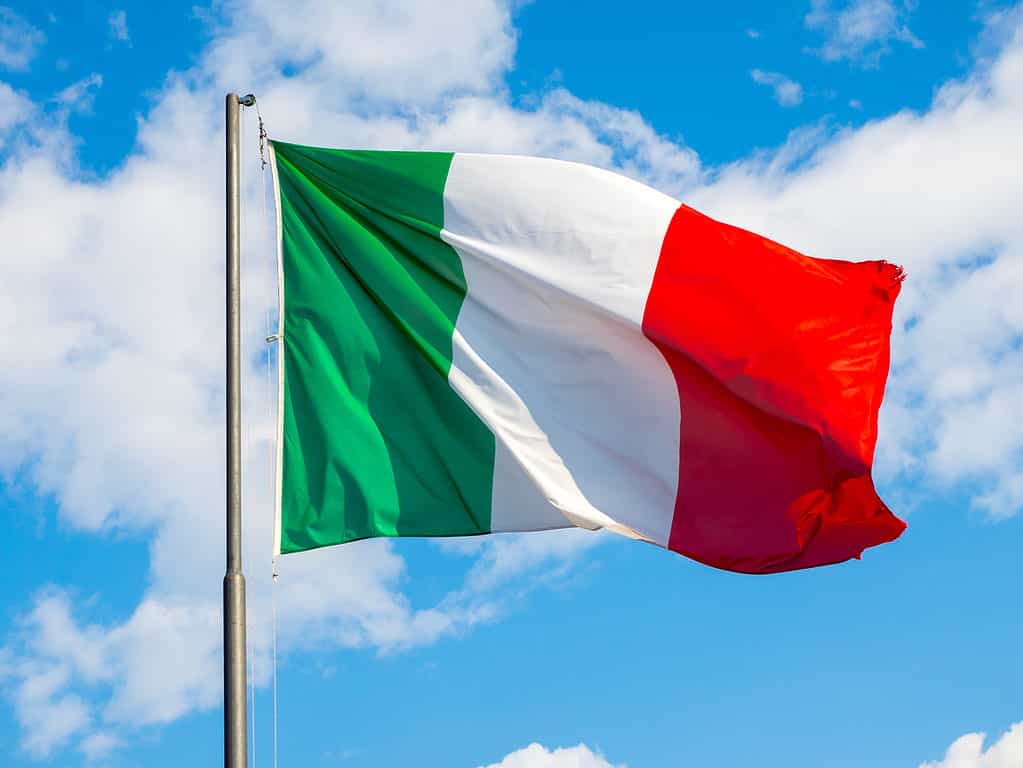
The Italian flag’s tricolor design is said to have been first used by the French Emperor Napoleon.
©iStock.com/okfoto
Although the current Italian flag has been flying since June 18, 1946, it was only made the country’s official flag on January 1, 1948. The tricolor design is said to have been first used by the French Emperor Napoleon. The first flag which consisted of the colors white, red, and green was formally adopted on January 7, 1797. The colors were chosen at the end of the 1700s under the influence of France. The colors of this flag were red, white, and green, but they were arranged horizontally from top to bottom.
The flag of Italy changed repeatedly, as the governance of the country switched hands, flowing from Napoleon and the French to others. However, the official colors of the country remained a constant recurrence in most of the flags adopted.
Flag of Italy: Meaning and Symbolism
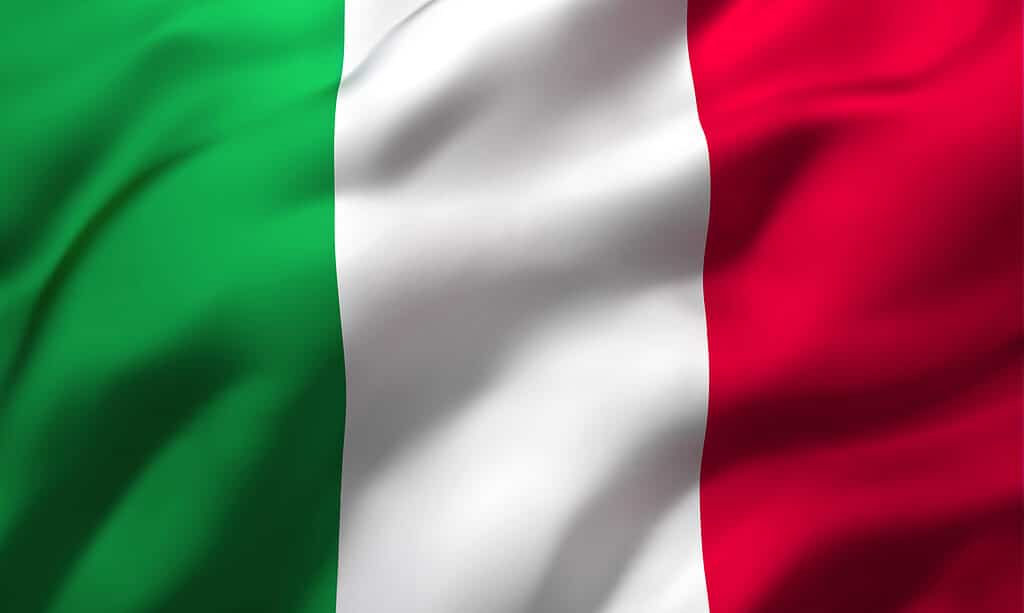
The red color on the Italian flag symbolizes the blood shed by the founding fathers during the wars that birthed the country’s independence.
©iStock.com/titoOnz
Italian national colors of green, white, and red are displayed in three equally sized vertical stripes on the country’s flag. The green portion of the flag represents the vast lands of Italy and the social equality, freedom, and hope of the country and its people. According to most people in the country, the white represents the snow-capped peaks of the many mountains found in the country; it is also believed to symbolize the faith of the people. Finally, the red is generally believed to symbolize the blood shed by the founding fathers during the wars that birthed the country’s independence. The red color is also believed to signify charity, but this is a belief that is also associated with the struggles of the forefathers.
Up Next:
White, Green, and Red Flag: Bulgaria Flag History, Meaning, and Symbolism
Red Flag with Yellow Star: Vietnam Flag History, Meaning, and Symbolism
The photo featured at the top of this post is © iStock.com/Nikola93
Thank you for reading! Have some feedback for us? Contact the AZ Animals editorial team.



